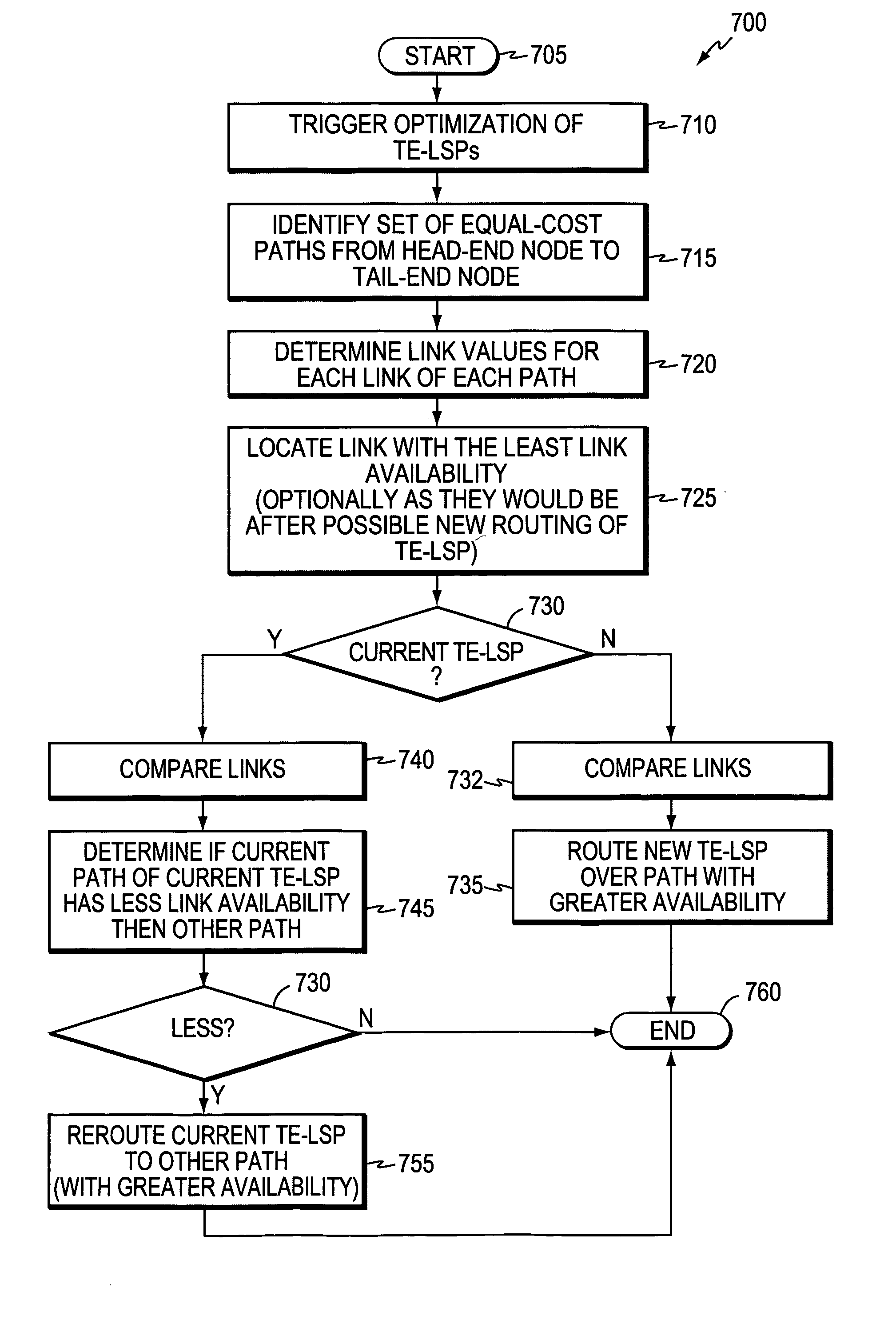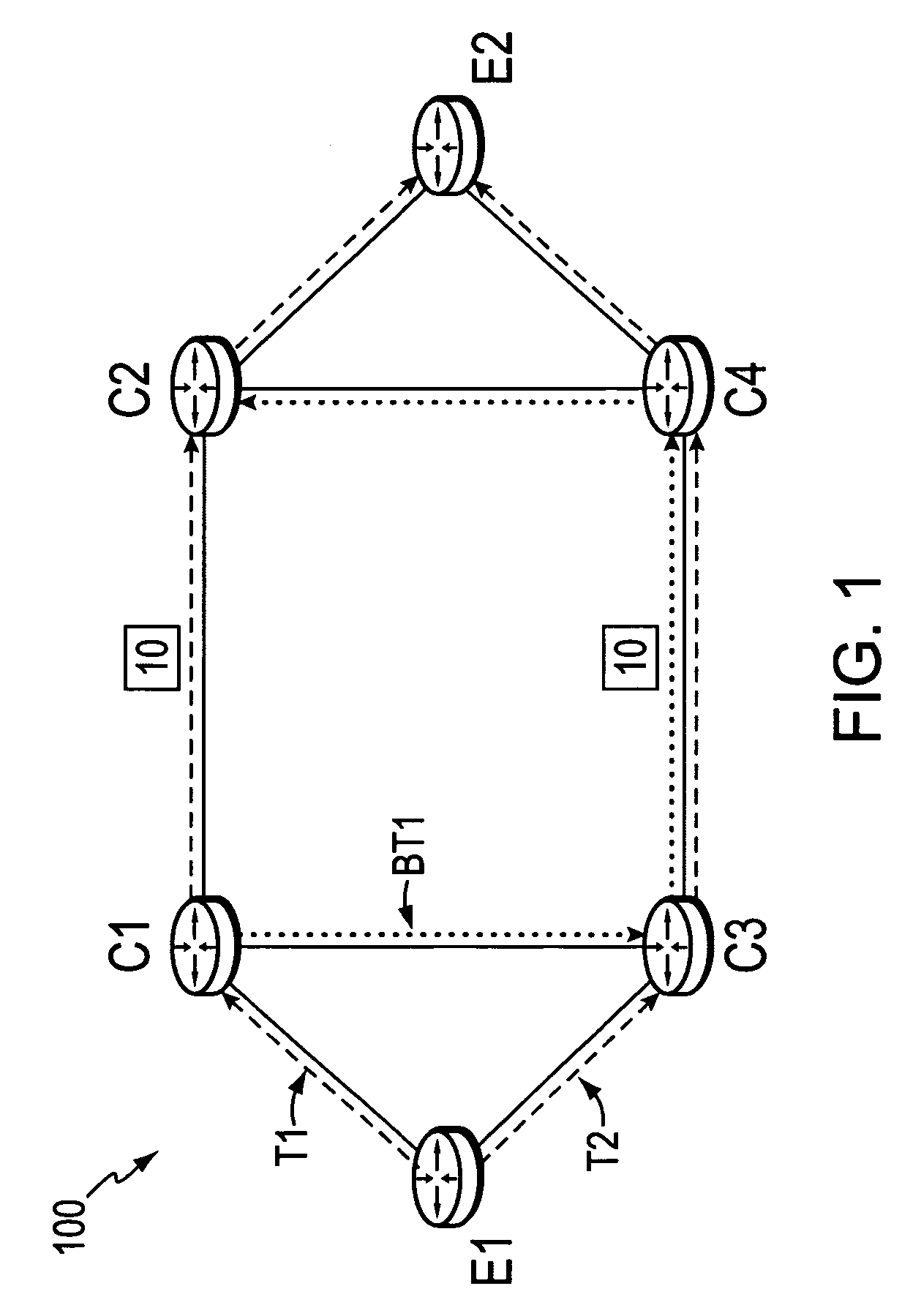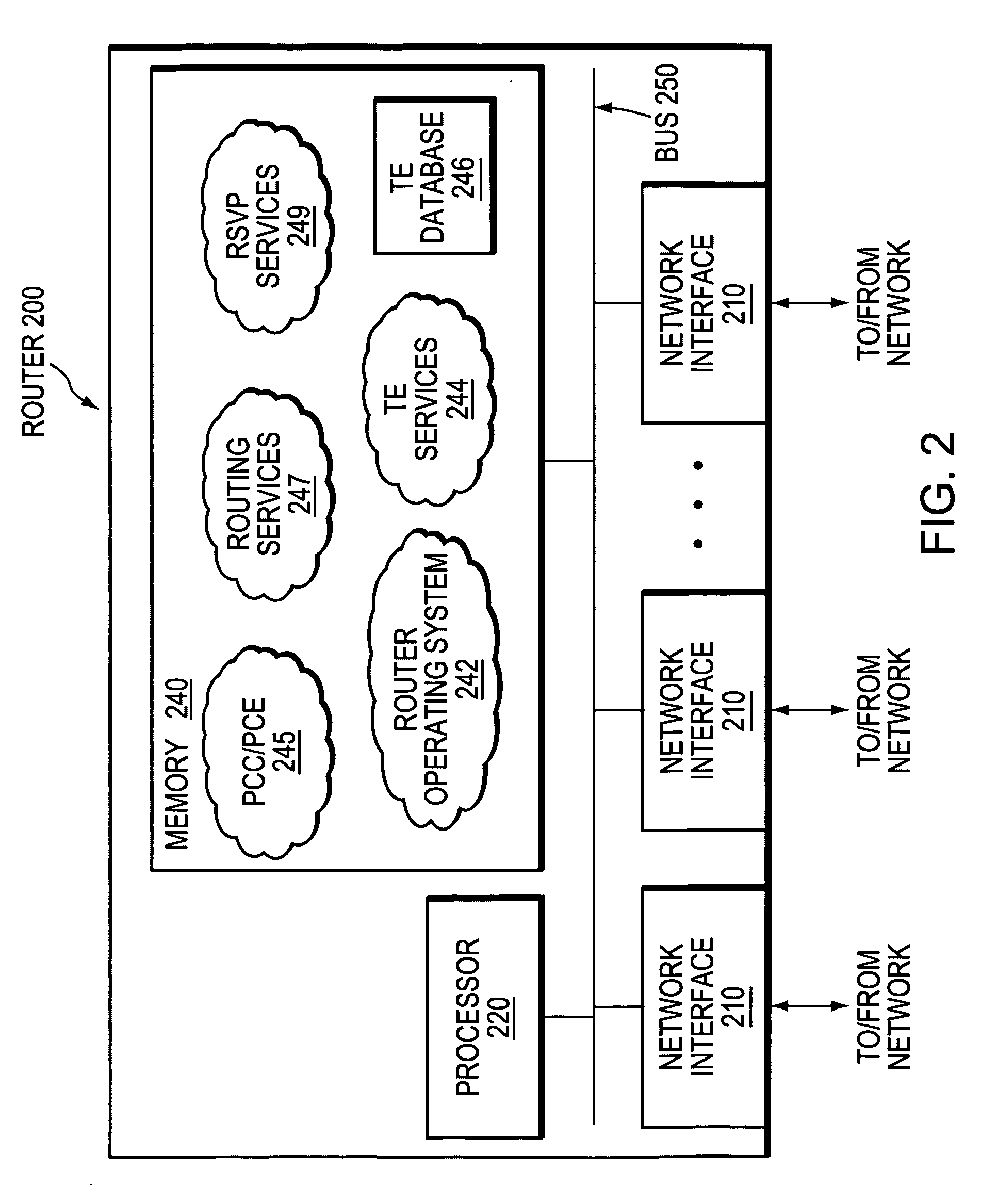Technique for efficient load balancing of TE-LSPs
a load balancing and computer network technology, applied in the field of computer network load balancing traffic engineering (te) label switched paths (lsps) of the computer network, can solve the problems of less than efficient consideration of te-lsps or other traffic already traversing the possible paths, traffic redirection, and burdensome management of interconnected computer networks, so as to efficiently load balancing te-lsps and efficiently load balancing te-ls
- Summary
- Abstract
- Description
- Claims
- Application Information
AI Technical Summary
Benefits of technology
Problems solved by technology
Method used
Image
Examples
Embodiment Construction
[0035]FIG. 1 is a schematic block diagram of an exemplary computer network 100 comprising edge devices (edge routers) E1 and E2 interconnected by core routers C1-C4 (e.g., through links as shown). A core router is generally defined as a router that is part of a core or “backbone” (i.e., the collection of core routers C1-C4) that serves as a single “pipe” through which all traffic from peripheral networks must pass on its way to other peripheral networks. Because of this, the core routers (and the links connecting them) are commonly designed to accommodate a high volume of traffic, such as, e.g., links with 2.5 GB (gigabytes) or 10 GB of bandwidth (such as optical connections OC48 or OC192, respectively). The edge routers E1 and E2 may connect to the peripheral networks (not shown), acting as access points (points of presence, POP) to the computer network for other devices of the peripheral network. Notably, the core may be organized as a meshed network, in which the devices are orga...
PUM
 Login to View More
Login to View More Abstract
Description
Claims
Application Information
 Login to View More
Login to View More - R&D
- Intellectual Property
- Life Sciences
- Materials
- Tech Scout
- Unparalleled Data Quality
- Higher Quality Content
- 60% Fewer Hallucinations
Browse by: Latest US Patents, China's latest patents, Technical Efficacy Thesaurus, Application Domain, Technology Topic, Popular Technical Reports.
© 2025 PatSnap. All rights reserved.Legal|Privacy policy|Modern Slavery Act Transparency Statement|Sitemap|About US| Contact US: help@patsnap.com



